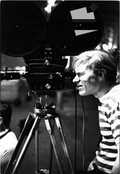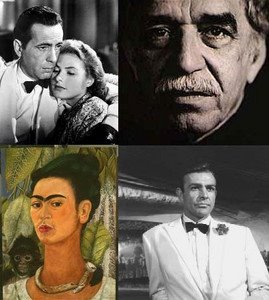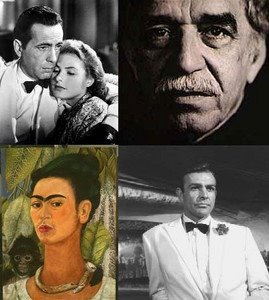The Biography Program Library
Many of these films are available on DVD. Please let us know your interests!
Hollywood Legend Humphrey Bogart
“Bogie said that dead is dead and life is for the living, and that you’ve got to move on…and if you don’t, it’s self indulgent and does the dead no good. He said it dishonored them because, if they gave you so little care for your own life, then they didn’t leave you with very much” –Lauren Bacall.
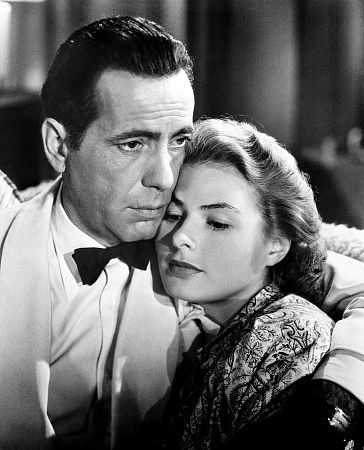
Ranked #1 on The American Film Institute’s list of the greatest screen actors, Bogart was the son of a Manhattan surgeon and a magazine illustrator. He got his start in New York working as a stage manager. Bit parts followed and an early contract with Fox showed promise, but went nowhere. A few years later and back on Broadway, he performed in “Petrified Forest” with Leslie Howard. The play was a hit and Bogart once again traveled to Hollywood to star in the film version. From there his career took off. His characterizations as a tough guy-gangster type made him a super star. In 1941 he made two break-through films: ‘High Sierra” and “The Maltese Falcon” (In roles which were both turned down by George Raft). “Casablanca” made in 1942 guaranteed his superstardom. In 1947 he and his wife Lauren Bacall went to Washington to protest the Communist witch-hunts generated by Senator McCarthy. A pop culture icon to generations of movie-goers, Bogie will forever be remembered for his role in “The African Queen” opposite Kate Hepburn in the early 1951. (1899-1957)
Hollywood Legend Cary Grant
Cary Grant “Hollywood’s Greatest Leading Man” “My screen persona is a combination of Jack Buchanan, Noel Coward and Rex Harrison. I pretended to be somebody I wanted to be, and, finally, I became that person. Or he became me. I have spent the greater part of my life fluctuating between Archie Leach and Carey Grant, unsure of each, suspecting each” –Cary Grant
At the age of 14, Grant forged his father’s signature of approval, and ‘joined the circus’. In 1920, he was one of eight ‘Pender Boys’ leaving England to travel to Broadway and perform in “Good Times”.
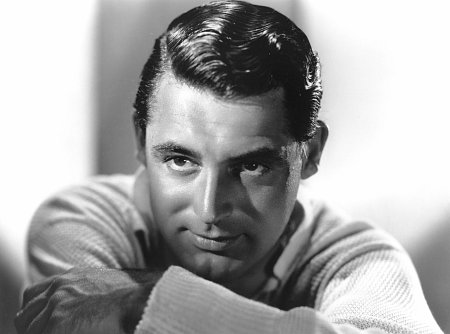
In 1932 he made his Hollywood debut in “This is the Night” a charming, sophisticated comedy of a type that would make him a top star. Still in his early twenties, Mae West wanted Grant for “She Done Him Wrong” because he combined virility with the aura and bearing of a gentleman. By the 50’s and 60’s Grant had invented ‘a man of the world’ persona and style… ‘high comedy with polished words’. Working with Grace Kelly in “To Catch a Thief” in 1955, the Grant style reached its pinnacle. “An Affair to Remember”, 1957, has been regarded as one of the greatest love stories ever made. Ian Flemming modeled the James Bond character with Grant in mind. Grant turned down the original role of James Bond, considering himself to be beyond it all and “part of Hollywood’s most glorious era”.
Hollywood Legend Jimmy Stewart
Jimmy Stewart “America’s Home Town Hero” “Sometimes I wonder if I am doing a Jimmy Stewart imitation myself. I’d like people to remember me as someone who was good at his job and seemed to mean what he said.” –Jimmy Stewart
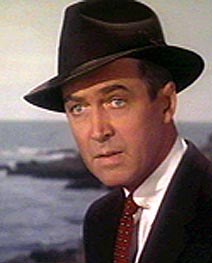
Ranked #10 in Empire Magazine’s top 100 Movie Stars of all time, “Jimmy” Stewart was one of America’s most beloved actors. Stewart today is less a movie star than a cultural icon, a gracefully aged embodiment of the values and traditions of America, as best presented in his film: “It’s a Wonderful Life”. A tall, gangly, soft-spoken man, Stewart studied architecture at Princeton University but was talked into acting by long-time pals Joshua Logan and Henry Fonda! His “aw shucks” demeanor served him well as the good guy, the shy guy and the nice guy in films like “Harvey”, 1950, and “You Can’t Take It With You”, 1938. Alfred Hitchcock turned him into a dramatic leading man in films like “Rear Window”, 1954, and “Vertigo, 1958. He also starred in his share of westerns including “Man Who Shot Liberty Valence” to “The Man From Laramie”. He sent his first best actor Oscar, “Mr. Smith Goes to Washington”, 1939, back home to Pennsylvania where his father proudly displayed it in his hardware shop for over 25 years.
Hollywood Legend Frank Sinatra
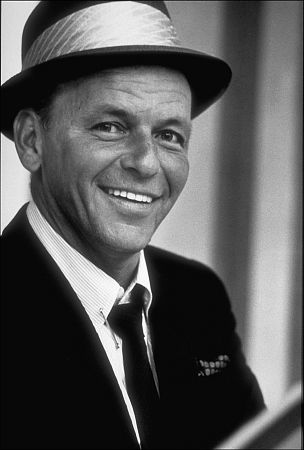
Frank Sinatra “Hoboken’s Chairman of the Board” “I’m trying to figure out Chairman of the Board? People come up to me and seriously say ‘Well, what are you Chairman of?’ And I can’t answer them.” -Frank Sinatra
Growing up poor on the streets of Hoboken, New Jersey made him all the more determined to work hard and make something of his life. A big-band singer by the early 40’s, Sinatra broke out on his own finding fame as the king of the bobby-soxers and starting his acting career in earnest.
Never formally trained, he was an instinctive actor who was best at playing parts that mirrored his own personality. He won an Oscar for his performance as Maggio in 1953’s “From Here to Eternity”. In the 60’s he concentrated on playing lighter roles, often with his good friends Sammy Davis Jr. and Dean Martin. “The Rat Pack” as they were collectively called had a hit with “Ocean’s Eleven” in 1960. His last lead role was as the aging detective in the “First Deadly Sin”, 1980. In it he gave a moving performance that was a befitting finale to a long and rich career.
Hollywood Legend Dean Martin
“If people want to think I get drunk and stay out all night, let’em. That’s how I got here you know… I drink because my body craves, needs alcohol. I don’t drink, my body’s a drunk.” –Dean Martin
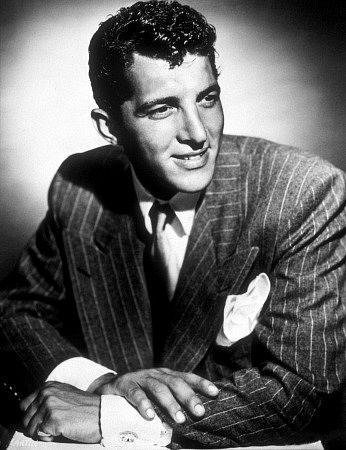
Though best known for the 51 films he made, Martin was a prize fighter, steel mill laborer, gas station attendant and card shark before seeing his first glimmer of fame. It came when he teamed up with comedian Jerry Lewis in 1946. The film “At War with the Army” sent the team towards superstardom. Personality conflicts broke up the duo in 1957. Martin achieved dramatic solo success first appearing with Marlon Brando in “The Young Lions”, 1958, and then “Rio Bravo”, 1959...bringing him international fame. Later, in the 60’s, Martin and his “Rat Pack Pals” Sinatra and Sammy Davis Jr. teamed to create a number of potent and lucrative box office successes. Martin was one of the early success stories of Hollywood learning the new medium of Television. Hundreds of hit TV shows and specials followed in which he invited his long time Hollywood friends to join him in front of the live television audience.
Hollywood Legend Sammy Davis Jr.
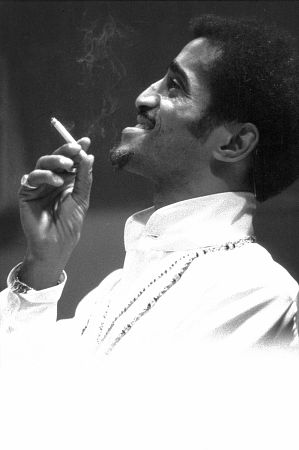
When asked what his golf handicap was, he replied: “My handicap? Man, I am a one-eyed, black Jew! That’s my handicap!” The always-articulate African-American, Sammy Davis never attended school of any kind. Performing since the age of five, he was largely self-taught. As a child song-and-dance entertainer in the vaudeville days, his father would often have him appear behind a screen with a fake cigar in his mouth on the arm of two ladies so as to beat the child-labor laws.
His big success came in the mid-50’s with his performance on Broadway in “Golden Boy”. That same year, his film debut in “The Benny Goodman Story” solidified his film future. Soon after he fell in with Frank Sinatra and Dean Martin to become a member of The Vegas-crazy “Rat Pack”. His work in 1969’s “Sweet Charity” demonstrated his amazing stamina as an entertainer, giving a great performance of savvy and dignity. His most famous quote was: “ Being a star has made it possible for me to get insulted in places where the average Negro could never hope to get insulted”.
Hollywood Legend Bob Hope
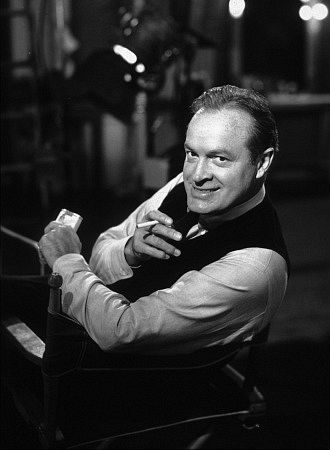 Hope holds two entries in the “Guinness Book of World Records”: One is for having the distinction of being “The entertainer with the longest running contract with a single network-spanning sixty-one years”.
Hope holds two entries in the “Guinness Book of World Records”: One is for having the distinction of being “The entertainer with the longest running contract with a single network-spanning sixty-one years”.
The second is for being the “most honored entertainer” with over 1500 Awards. Probably the most popular entertainer in the history of western civilization, Hope emigrated from London to the United States in 1907. After some years on stage as a dancer and comedian, he worked his way to Broadway in the early 30’s. Hope made his first film appearance in “The Big Broadcast of 1938” singing “Thanks for the Memories”, which became his signature tune. In partnership with Bing Crosby and Dorothy Lamour, he appeared in the highly successful “Road to…” comedies (1940-1952), and in many others until the 70’s. During WWII, the Korean War and Vietnam eras he spent a great deal of time entertaining the troops in the field. He was given special Academy Awards for his devotion to entertainment and service to his countrymen on five occasions.
Hollywood Legend Mickey Rooney
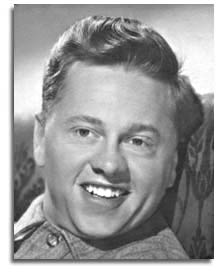 Mickey Rooney “Hollywood’s Little Giant” “You’ve got to recognize there will never be another you. It has nothing to do with ego; it happens to be the truth. There will never be another person the same. There will never be another you. There will never be another me. And there will never be another show like this.” –Mickey Rooney Mickey started acting at the age of 15 months in his parent’s vaudeville performance. As a kid he became well known in a series of over fifty silent comedies between 1927-33. Walt Disney loved him so much that he named “Mickey Mouse” after him! With the advent of the talkies, he studied with fellow child actor Judy Garland. Together they starred in “The Andy Hardy Series”, cheerfully naive musicals that usually ended with the kids putting on an impromptu musical show. In 1939 he was America’s top box office draw surpassing even fellow child-star Shirley Temple. He reached an early peak to his career staring opposite Elizabeth Taylor in “National Velvet”, 1944. After the war, his childhood days well over, Rooney hit a slow spot in his career, but managed to survive, even to this very day. In his senior years, Rooney can often be seen playing an ancient version of his original self…a cheerful old mentor with a youthful spirit!
Mickey Rooney “Hollywood’s Little Giant” “You’ve got to recognize there will never be another you. It has nothing to do with ego; it happens to be the truth. There will never be another person the same. There will never be another you. There will never be another me. And there will never be another show like this.” –Mickey Rooney Mickey started acting at the age of 15 months in his parent’s vaudeville performance. As a kid he became well known in a series of over fifty silent comedies between 1927-33. Walt Disney loved him so much that he named “Mickey Mouse” after him! With the advent of the talkies, he studied with fellow child actor Judy Garland. Together they starred in “The Andy Hardy Series”, cheerfully naive musicals that usually ended with the kids putting on an impromptu musical show. In 1939 he was America’s top box office draw surpassing even fellow child-star Shirley Temple. He reached an early peak to his career staring opposite Elizabeth Taylor in “National Velvet”, 1944. After the war, his childhood days well over, Rooney hit a slow spot in his career, but managed to survive, even to this very day. In his senior years, Rooney can often be seen playing an ancient version of his original self…a cheerful old mentor with a youthful spirit!
Hollywood Legend Bing Crosby
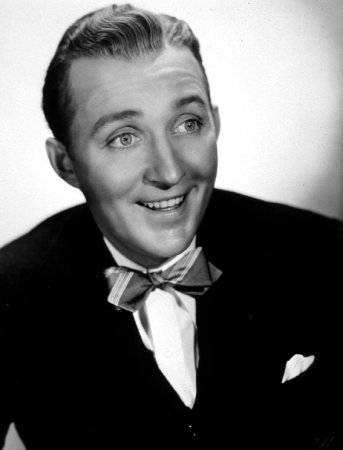 Bing Crosby “America’s Crooner” One of his early inspirations was Louis Armstrong, who returned the admiration. Louis once described Bing’s mellow voice as: “Like gold being poured out of a cup.” His last words were: “That was a great game of golf fellers.” A radio singer in the early thirties, Bing’s big break came in 1932 when Paramount decided to make a film featuring radio singers of the time. His songs about not needing a bundle of money to make life happy was the right message for the decade of the Great Depression in America. In films, his relaxed low-key style carried over into the ‘road comedies’ in which he starred with Bob Hope. Perhaps his best and most important performance was in 1942’s “Holiday Inn” in which he sang Irving Berlin’s “I’m Dreaming of a White Christmas”, the most successful song of all time. In 1944 he won best actor Oscar for his performance as Father Leo O’Malley in “Going My Way”. He also had the Oscar winning song that year with his performance of “Swinging on a Star”. Throughout his film career, Crosby remained active, and highly successful, in records, radio and television. Perhaps his greatest contribution of all was the early financing of the new medium: ‘video tape’!
Bing Crosby “America’s Crooner” One of his early inspirations was Louis Armstrong, who returned the admiration. Louis once described Bing’s mellow voice as: “Like gold being poured out of a cup.” His last words were: “That was a great game of golf fellers.” A radio singer in the early thirties, Bing’s big break came in 1932 when Paramount decided to make a film featuring radio singers of the time. His songs about not needing a bundle of money to make life happy was the right message for the decade of the Great Depression in America. In films, his relaxed low-key style carried over into the ‘road comedies’ in which he starred with Bob Hope. Perhaps his best and most important performance was in 1942’s “Holiday Inn” in which he sang Irving Berlin’s “I’m Dreaming of a White Christmas”, the most successful song of all time. In 1944 he won best actor Oscar for his performance as Father Leo O’Malley in “Going My Way”. He also had the Oscar winning song that year with his performance of “Swinging on a Star”. Throughout his film career, Crosby remained active, and highly successful, in records, radio and television. Perhaps his greatest contribution of all was the early financing of the new medium: ‘video tape’!
Music Legend Ali Farka Touré
The ‘Blues Man’ From TIMBUKTU
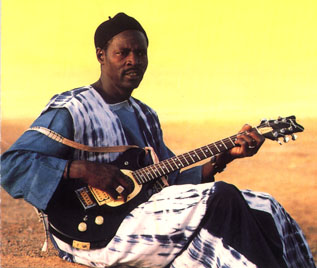
Winner of The San Francisco’s Golden Gate Music Award 2001
Ali Farka Touré, gifted musician and farmer, comes from Timbuktu. Yes, there is a place called Timbuktu and it’s in Africa. In the loop of the Niger to be precise. As a child Ali never learned to read or write, but his early passion for a home-made one-string, violin-like instrument led him away from his humble roots to the music festivals of Europe in the 60’s.
A bit of new-found wealth afforded the purchase of an acoustic guitar and for Ali, the instrument changed his world. Today, he’s recognized internationally for his unique sound.
Critics and fans alike have compared his music to the Soul-Blues magic of greats like B.B. King, John Lee Hooker...even Eric Clapton. Ironically he had never heard their “sound” before creating his music. Amazingly, his sound is authentic Blues....and through it, we can hear the native roots, the origins of the Afro-centric rhythms found in Soul, Blues and Jazz!
These Afro-centric sounds, which found their way across the seas to America during the era of slavery, preserved and transformed into modern Jazz, are the essence of Ali’s music.
The documentary takes us beyond the sound deep into the personality and heart of the man. A true son of the soil, Ali shares all with his extended family. For him the joy is just to be alive and you hear it coming through his music and lyrics. A mobile camera follows him from concerts in Bamako to voodoo cults dedicated to the ‘Spirits of the River’, going through the Tuaregs camps...all the way to the most mysterious city of Timbuktu.
Kids in Brooklyn, Dublin, Leeds, Bordeaux, Stuttgart...any corner of the world that loves ‘Blues’, knows the music of Ali. This award-winning film from Yves Billon and Henri Lecompte reveals in a charming and delightful manner the irony of an original, a man not influenced by western sound, schooled on an ancient-ethnic instrument.
Classic Hollywood Legend Delores del Rio
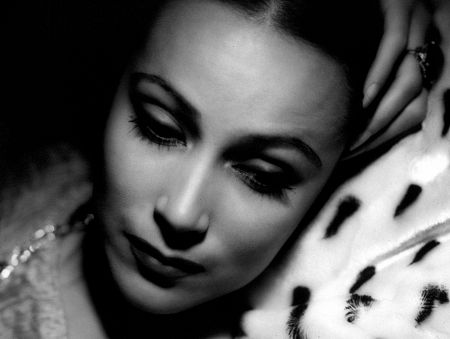
Delores del Rio and the Golden Age of Mexican Cinema Delores del Rio was the first Mexican movie star with International appeal, and she made an extraordinary career early on in 1920’s Hollywood, during the silent screen era.. With the advent of talkies, her career seemed crushed, as her heavily Spanish accented English had little appeal. In 1933 she starred in the classic “Down to Rio” with the fresh faces and dancing styles of Fred Astaire and Ginger Rogers…they stole the film. In 1942, her Hollywood career was behind her and she moved back to Mexico after an affair with Orson Welles caused her second divorce. But that was not the end, it was her beginning! Mexican Director, Emilio Fernandez asked her to star in “Flor Silvestre” in 1943, and the miracle happened…at age 37 Delores del Rio became the most famous movie star in her country, filming in Spanish for the first time. Her association with Fernandez’s team, Gabriel Figueroa, Mauricio Magdaleno, and Pedro Abandonadas was decisive in creating The Mexican Cinema Golden Era. Del Rio became the prototype Mexican Beauty in foreign countries. Her face and figure made her one of the silver screen’s most eminently watchable stars. She appeared in Mexican theater as late as the 1970’s , and periodically returned to Hollywood to play supporting roles, and looked breathtakingly beautiful to the end of her life.
Musical Legend Perez Prado
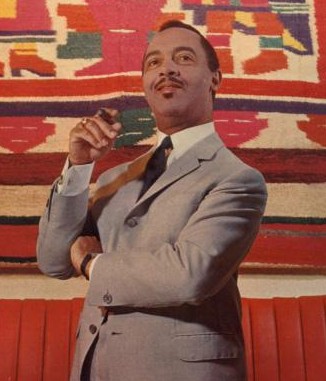
Perez Prado and Mambomania! “I am a collector of cries and noises, elemental ones like seagulls on the shore, winds through the trees, men at work in a foundry. Mambo is a movement back to nature, by means of rhythms based on such cries and noises, and on simple joys.” -Perez Prado Though diminutive in stature, Cuban-born Perez Prado was a giant in the world of post-war popular music. Dubbed “The Mambo King”, he reigned supreme as one of the most influential pop orchestra leaders of the early 1950’s. As the mambo rhythm spread across the continents, a society emerged from the dark years of World War II to shed its inhibitions and embrace the frenzy of this Afro-Cuban beat with a dash of American swing. Prado’s conception of Mambo began in 1943. He said that four, five or six musicians would often play after-hours jam sessions on the “tres” (a small Cuban guitar) and the resultant cross rhythms and syncopation gave him the idea. Mambomania lasted well into the middle fifties, but its sound was finally drowned out by the advent of Rock and Roll.
Musical Legend Mel Torme
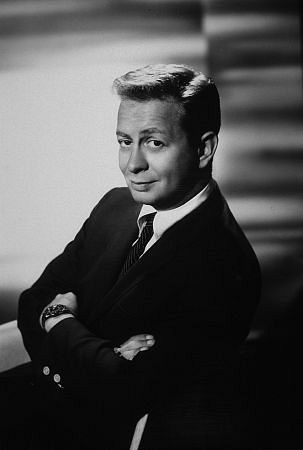
Mel Torme “Smooth as Velvet” He was nicknamed, “The Velvet Frog”, a nickname he was not particularly fond of. Singer of “Lili Marlene” in the USA, he composed the words and music to “The Christmas Song”: ‘Chestnuts roasting on an open fire, Jack Frost nipping at your toes…’. A professional singer at the age of three, Torme was a genuine musical prodigy. As a teenager he played the drums in Chico Marx’s band and earned the nickname, “The Velvet Frog” because of his smooth, mellow, high baritone voice. In the 40’s he formed his own Jazz group, the Mel-Tones. He acted in several films and wrote several books including a biography of Judy Garland. Famous for his ability to 'Scat', making up words and sounds related to a melody as he sang, he was inducted into the Big Band and Jazz Hall of Fame in 1990.
Hollywood Legend Jayne Mansfield
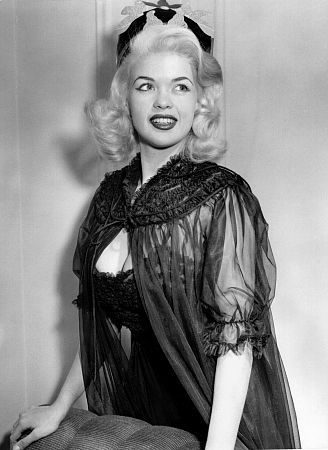
Jayne Mansfield “Love and Kisses” Jayne Mansfield had a reported IQ of 163. Her measurements at the time of the movie “Illegal” were reported as 40-21-35 ½. She was Playboy’s Playmate of the Month in February 1955. American actress and sexual icon of the 50’s and 60’s, Mansfield studied theater in college and got her big break on Broadway in 1957 starring as Rita Marlowe in “Will Success Spoil Rock Hunter?” Her buxom appearance and squeaky voice found their way into the Hollywood version of the Musical, and ‘the dumb blond-bimbo’ character was born. Never taken too seriously, her star was constantly overshadowed by Marylyn Monroe, who always got the plum roles. She had a real talent for acting, but Hollywood insisted that she remain the “dumb blonde”. The beautiful woman who starred in only 25 films, the woman who fought so hard for respectability, the woman who in her own right was a very good actress died in an auto crash, aged 34. Her final film, “Single Room Furnished” was released the following year.
Hollywood Legend Sean Connery
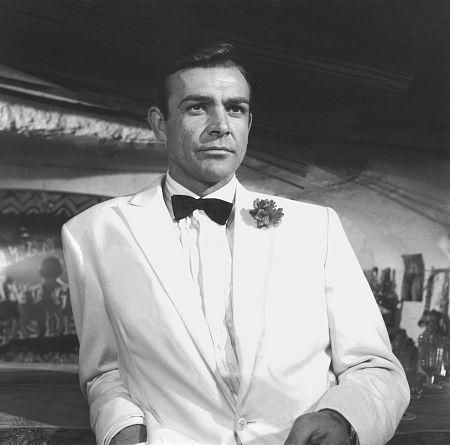
Sean Connery “Mr. James Bond” “I never disliked Bond, as some have thought. Creating a character like that does take a certain craft. It’s simply natural to seek other roles. More than anything I’d like to be an old man with a good face, like Hitchcock or Picasso.” –Sean Connery Voted sexiest man of the century by People Magazine, Connery found fame and great fortune as the suave and sophisticated British agent, James Bond. At sixteen he joined the British Navy. Along the way to his film career he worked as a coffin polisher, milkman and nude model at Edinburgh Art College. His weight-lifting hobby enabled him to represent Scotland in the 1950 Mr. Universe contest. Approaching acting as a lark, his first film was “Lilacs in the Spring” in 1954. From there the offers poured in! Lost in the all-star cast of “The Longest Day” in 1962, he was immediately noticed by Producer Harry Saltzman who cast him as James Bond in “Dr. No” later that same year. He appeared in over 7 Bond films, but along the way and well beyond, his star quality playing all sorts of handsome, brave and humanly warm characters has kept him going. Today, Connery has reached senior citizenship, but his international popularity shows no signs of abating!
Hollywood Legend Tom Cruise
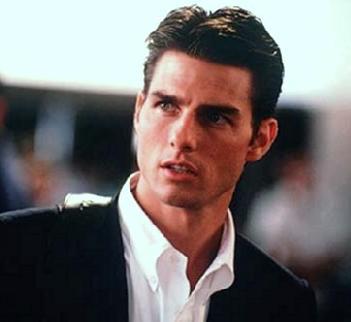
Tom Cruise “Mr. Beautiful” “The thing about filmmaking is I give it everything, that’s why I work so hard. I always tell young actors to take charge. It’s not that hard. Sign your own checks, be responsible.” -Tom Cruise In 1976, if you had told 14 year old Franciscan seminary student Thomas Cruise Mapother IV that one day he would be considered on of the top 100 movie stars of all time, he would have probably grinned and told you his only ambition was to become a priest! By the time he was 18, he had abandoned this early ambition and headed for New York to start an acting career. The next fifteen years of his life are the stuff of legends. In 1981’s “Endless Love” Cruise is still 18 years old! “Risky Business” in 1983 set his rocket ride to stardom. Handsome, with a devastating smile, Cruise has matured as an actor, while retaining the appeal that made him popular. He’s ranked #3 in Empire magazine’s top 100 movie stars. He uses the clout of stardom to get a great many worthwhile and serious film projects made, having come a very long way from the lonely wanderings of his youth!
Television Legend Milton Berle

Milton Berle “Mr. Television” Best known and much beloved for his groundbreaking and early work in television in the late 40’s and early 50’s, ‘Uncle Miltie’ was truly deserving of the title “Mr. Television”. As a child actor, he worked in vaudeville. His adult film debut was in 1937’s “New Faces of 1937” in which he did a hilarious sketch with Richard Lane as his straight man. It is said the Berle did more for television than any other single human being. Popularizing the medium in his era to such an extent that restaurants and theaters complained about business on the nights his show was aired!
Television Legend Sid Caesar
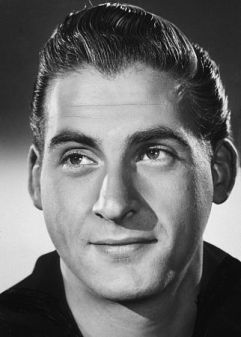
Sid Caesar “Television’s Comedy Genius” A burly, forceful comedian with an astonishing array of dialects, a genius for pantomime, and an amazing physical grace, he spent much of WWII performing with the U.S. Serviceman’s troupe “Tars and Spars”. After the War he met his long-time partner Imogene Coca and together they concocted one of Television’s funniest and most important shows. Called ‘Your Show of Shows’, it was live and on every week for an hour and a half. Most of the great comedy writers of the late 20th Century worked on the show, including Woody Allen, Carl Reiner and Neil Simon. The weekly content demands drove half of the staff and cast completely mad.
Television Legend Steve Allen
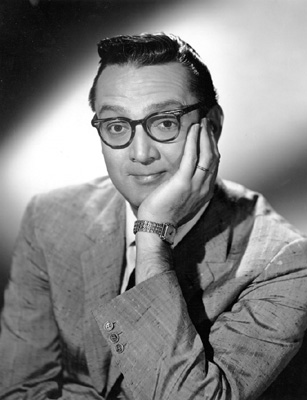
Steve Allen “Hi-Ho Steverino” Steve was born in 1921. His parents were the vaudeville comedy team of Montrose and Allen. Following military duty in WWII, he was hired by a Phoenix radio station. He shifted to Television in 1950. In ’53 he scored with NBC, creating “The Tonight Show” a format that lives on to this day in late night American television. He credited his mother for his sense of humor. He wrote more than 50 books and over 7,000 popular songs. In the 1985 Guinness Book of Records he was honored as the world’s most prolific songwriter, yet he considered himself a musical illiterate because he never learned to read music.
Television Legend Carl Reiner
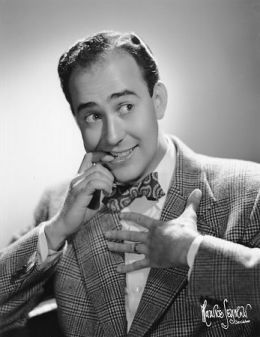
Carl Reiner “Still Laughing” A veritable Renaissance Man of Comedy, this genial one-man band has been an integral cog in American humor for five decades. He came to fame in the 50’s writing and performing on Sid Caesar’s “Your Show of Shows”. In 1961, he single handedly refined the sit come format in “The Dick Van Dyke Show”. He broke into screenwriting in 1963 with Norman Jewison’s “ The Thrill of it All”. He had the leading role in Jewison’s “The Russians Are Coming!” in 1966. He has won more Emmys for his writing and performing than any other living talent. Reiner’s sons Lucas and Rob have successfully followed him in the business as actors and directors.
Television Legend Soupy Sales
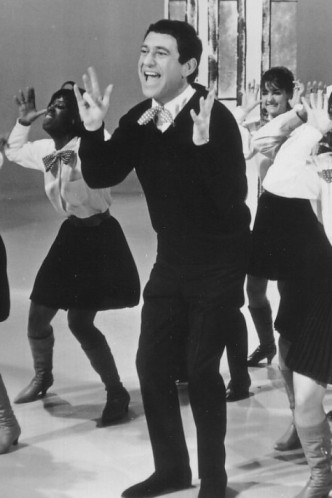
Soupy Sales “The Prince of Pies” Television’s early pioneer of children’s syndicated programming, Soupy was born in North Carolina. His show was adored by not only the kids but by the parents too. Famous for his guest stars, including most of his contemporary greats during the 50’s like Frank Sinatra, Soupy would always arrange to have a cream pie throw into his guest’s face at the end of the show. Notorious for his teasing, Soupy once told all of the kids in his TV audience to take a buck from dad’s wallet and send it to him at an address in Puerto Rico. Over $50,000 was sent in…all of course returned!
History Legend
The Eisenhower Legacy Series
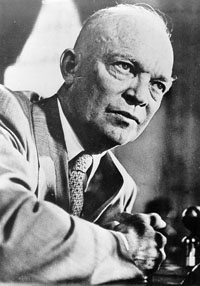
The Eisenhower Legacy Series Produced over the last 7 years, this Series represents the finest documentation of this famous American Military Man and President ever researched. The Series is narrated by General Colin Powell, former Secretary of State for the Unites States of America. Scores of interviews with famous Statesman, Politicians and Government Leaders reveal the nature of the Man and how he dealt with the difficult times of War and Peace. The Eisenhower Legacy “Supreme Commander 1941-1945” (60:00) The story of how Eisenhower was chosen to lead the Allied Forces in Europe in WWII. How he won the confidence of Churchill, Roosevelt, G.I. Joe and The Allied Troops. How he handled the Normandy Invasion and the subsequent fighting across Europe. The Eisenhower Legacy “Cold War Warrior 1945-1952” (75:00) How Eisenhower gave up civilian life after the war to return to Europe as the first Commander of NATO. The Eisenhower Legacy “Politician and President 1953-1961” (75:00) How Eisenhower returned to the States to enter politics, run for office, win and deal with the issues rising domestically and internationally at the start of the Cold War. The Eisenhower Legacy “Commander and Chief 1953-1961” (75:00) How Eisenhower dealt with the Cold War and Communism on both Diplomatic and Military fronts and through covert CIA operations, and used personal diplomacy to handle the nuclear threat and maintain a fragile peace.
History Legend
Saddam Hussein, Master of Baghdad, The Final Chapter

SADDAM HUSSEIN The Untold Story of the Man and the Myth…The (Former) Master of Baghdad A Film by Michel Vuillermet and Jean Pierre Beaurenaut 52:00 Minutes Produced by Les Films du Village Presented by Planet Group Entertainment In the cities and surrounding countryside of Iraq, the buildings and crossroads still display the tens of thousands of giant portraits glorifying Saddam Hussein. Today, they are faded by the sun, worn by the weather and tattered like posters from a long forgotten film, featuring a withered star. But the star’s power over the people seemed irreversible. Before, during and shortly after the Iraq War of 2003 in the world beyond Baghdad, his ability to threaten had not faltered…like a bad guy in a comic strip. Now that he’s been captured, the scene will no doubt change for the better. This stereotyped image of a monolithic and unfathomable tyrant, the embodiment of sheer evil, is the starting point of SADDAM. It helps to present the simplistic side of the character, but hiding behind this mask is a complex personality who has stopped at nothing...even killing his own people to gain and hold on to power. The history of Iraq teaches that dictators and their regimes don’t just pop into place. Not born a dictator, Saddam became one under special circumstances. His fate and the story of his country are deftly revealed in this film. Exploring the development of his personality, from his early days in the embryonic Iraqi Ba’ath Party to the present is the essence of the presentation. Clips from Iraqi news and propaganda films highlight to circumstance, uncovering the nature of the situation and the Nazi-like skills used to influence the people. The Producers have accessed a new Saddam ‘feature film’ released in Baghdad, before the war, to freshly highlight his terrifying stranglehold. SADDAM opens and dissects Hussein’s incredible ability to survive for years in spite of the ruination of his own country. Elements in the film include propaganda materials, confidential and secret documents spirited out of the country, testimonies with politicians and exiled former followers and personalities from the world stage who have dealt directly with the man. SADDAM was originally produced and released in 2003, just prior to the start of the war. "SADDAM, The Final Chapter" is scheduled for completion in October 2004 and it incorporates his capture and elements leading to his trial. For these and other titles available from the PGE Producer’s Series go to www.pgeparis.com
Comics Legend Charles Schulz...The Peanuts Lagacy
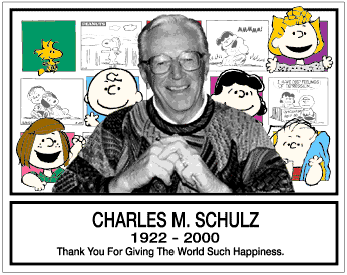
The Story of Charles Schulz… “A Charlie Brown Life” Creator of ‘Snoopy’ and the “Peanuts” cartoon strip, ‘Sparky’ Schulz was a struggling young cartoonist in 1948 when he sold a single panel “L’il Folks” to the St. Paul Pioneer Press. The paper refused to run it more than once a week so in 1950 he sold it to United Feature Syndicate and the “Peanuts” comic strip was born. Schulz spent the next fifty years writing and drawing every frame of Peanuts in seven strips a week! Today Classic Peanuts runs in over 25,000 newspapers worldwide and the characters have appeared in countless TV programs and films. This is entertaining and delightful biography, rich with personal interviews and clips of Schulz working and playing, takes us into another world. We get a deep insight into the workings of Schulz’s mind to meet a very sensitive, loving individual, steeped in the ways of American traditional family values. Those values were reflected in all of the Peanuts characters: from Charlie Brown, to Lucy, to Linus, to Pig Pen and a menagerie of talking, thinking animals, the most famous of which was Snoopy, the irascible Beagle!
Literary Legend Gabriel Garcia Marquez
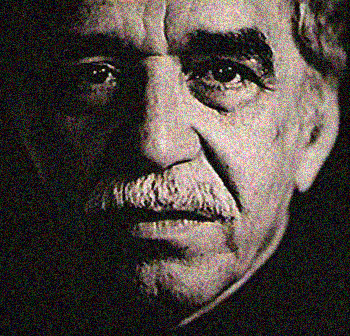
GABRIEL GARCIA MARQUEZ…A Biography In His Own Words. Gabriel Garcia Marquez, Nobel prize-winning author of such luminous novels as 'One Hundred Years of Solitude' and 'Love In The Time Of Cholera', was born in 1928 in the tiny Caribbean village of Aracataca, situated in a tropical region of northern Colombia in the home of his grandfather, a pensioned colonel from the civil war at the beginning of the century. This is the setting for the imaginary, magical world of his writing, and the setting for this very special film…a wondrous recreation of the life and times that gave birth to his own lyrical creations… ‘Whether writing short stories, epic novels, non-fiction or screenplays, Gabo, as he is affectionately known, is above all a brilliant storyteller. His writing is a tribute to both the power of the imagination and the mysteries of the human heart. In Gabo’s world, where flowers rain from the sky, and dictators sell the very ocean, reality is subject to emotional truths as well as physical boundaries. It is a world of great beauty and great cruelty, a world where love brings both redemption and enslavement; and a world where the lines between objective reality and dreams are hopelessly blurred. It is a world very much like our own.” http://www.themodernworld.com/gabo/ The author is revealed as a skillful and spellbinding storyteller, taking us from birth ("Since I was born I had known I would be a writer.") to the turning points in his life that formed him and his body of work. The first eight years of Gabo’s life are spent at the house of his grandfather. They are the only two males in a house full of women; women who live in a supernatural world of curanderas, brujas and sorcery. Here, everything is possible and part of everyday life. For them the ordinary world is but a veil behind which lurk beings far beyond normal human ken. Their influence becomes important to the boy's own way of thinking. Grandfather is much more down to earth. The ‘Colonel’ plays a pivotal role in the boy’s life, and his future literature. The old man speaks to Gabo as an adult, of the realities and politics of their turbulent country. When his grandfather dies and the young Gabriel is sent off to boarding school, he is torn away from his fantastic childhood world. But the stories lay deep in his memory. The nostalgia for this land of 'magical realism' would be the wellspring and "even the longest life would not be enough to tell about it." But Marquez will always travel between the two worlds of magic and reality, and the paradoxes of his past give rise to the complex, finely woven threads of future narration. In Bogota, a turning point comes for the young law student when he reads of Franz Kafka's 'Metamorphose', from the first line: "Grégoire Samas awoke one morning from uneasy dreams to find himself transformed into a giant insect." The story also transforms the struggling young law student. A moment of truth ("That is the way I think!"), and Marquez finds his own writing voice. He pens his first short story, and never looks back, breaking his law studies for his work as a journalist. In the late 1940's, against a climate of social and political unrest in Colombia, military plunder and the torching of his Bogota law school, Marquez returned to the Caribbean, to work as a journalist and short-story writer. But the perspective he requires to write about his grandfather and the convoluted politics of Colombia take him first to Rome in 1954, where he was sent on assignment by his newspaper, then to Paris, where he becomes acutely aware of his Caribbean culture. It is the "Time of the Dictators", and Paris is full of other Latin American expatriates: Peru, Santo Domingo, Venezuela. All live in the same neighborhood, awaiting news from their respective countries, all in the throes of unrest. A hoarse shout from a window, "He has fallen!", and everyone rushes to the streets, thinking it 'their own' dictator! Even though he was Colombia’s most famous citizen long before he received the Nobel Prize in Literature in 1982, Gabo has mostly lived abroad in a sort of self-imposed exile. His home in Bogata has never been his main residence. He and his wife and family have for many years spent most of their time in Mexico City and part of the year in their other homes in Cuernavaca, Barcelona, Paris, Havana, Cartagena, and Barranquilla, on the Caribbean coast. Marquez writes with great insight and joyous humor, but his saddest and hardest book to complete concerns the appalling drug wars of Colombia. After forty years of unrelenting bloodshed, his country now has the dubious distinction of being the kidnapping capital of the world. Marquez uses his fame to fight this scourge of his homeland, to campaign for human rights, and to meet with world leaders, seeking solutions. Balanced between both worlds, Gabriel Garcia Marquez looks beyond the veil of this world into the world of magical realism. Does he hold any hope for the future of this one? Other Related Titles from the “Colombia Explained Series”: Fernando Botero….’I Am the World’s Greatest Painter’ The FARC, Fifty Years of Guerilla Warfare Colombia…The Money Launderers The Colombian Death Squads For these and other titles available from the PGE Producer’s Series got to www.pgeparis.com
Artistic Legend Frida Kahlo
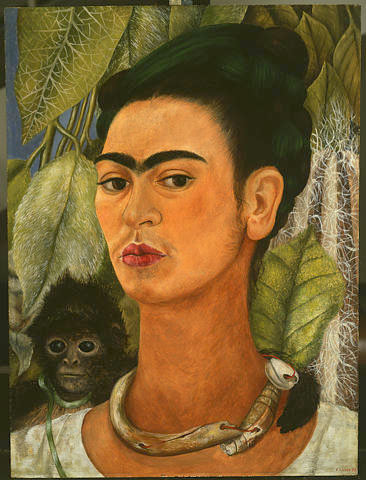
Frida Kahlo, in her own words… ‘The Pain and The Ecstasy’ Of the world's great painters who truly 'suffered for her art', Frida Kahlo, the ultimate symbol of Mexican Bohemia in the Surrealism of the thirties and forties, probably sacrificed more than most of her peers on the altar of creativity. In 1925, at the age of eighteen, Kahlo was involved in a horrific accident that was to inform the rest of her existence. A train collided with the bus in which she was a passenger. An iron pole pierced her body, fracturing her pelvis and most of her vertebrae, tearing through flesh and bone and organs as if tissue paper. Frida would miraculously survive, only to endure from that moment on, a life of constant, terrible, intractable pain and more than thirty debilitating, often botched surgical operations. With each bout of suffering, came her ART. Visceral, frightening, mesmerizing. and utterly unforgettable. She began to paint in the first painful convalescence following her tragic accident. To record on canvas, with horrific brilliance, a life grim, torturous, and tenuous, yet at the same time, sensuous, fascinating and full of promise, a life of celebrity, politics, and fame. At the age of twenty-two, she married the great artist and muralist Diego Rivera, and the two embarked on a stormy, passionate relationship that was to encompass and help define the historic 'surrealist' revolution. Latin America, with its exotic pre-Colombian myths and religious symbolism, could hardly have been more surreal, and Kahlo’s work became popular in Paris. Picasso considered her the 'best portrait painter of the twentieth century". In 1939 André Breton, the founder of Surrealism, organized the first exhibition of her work outside of Mexico. Paradoxically, her unique style expressed a symbolic naïf quality, and Frida did not consider herself a surrealist..."I never paint my dreams. What I have portrayed is my reality." Writer and friend Carlos Fuentes said, "As she stated in her journal... "I will continue forever to write to you with my eyes." Her 'vision' and her reality became a world of crucifying agony, corsets of leather and steel, amputation, an addiction to pain-killing drugs and alcohol. And, incongruously, there were countless affairs with both men and women, among them Leon Trotsky, Louise Nevelson and Georgia O'Keefe. Frida Kahlo, The Pain and The Ecstasy', filmed on location in her birthplace of Mexico, contains never before seen archive footage, and focuses not only on her remarkable paintings but also on her own words drawn from her private diaries. Every painting tells a true story. Recorded interviews with those who remember Frida Kahlo, complete a portrait of the artist and the person, her indomitable spirit, and the magical, painful realism of her complicated life.
FERNANDO BOTERO
‘An Artist Larger Than Life’
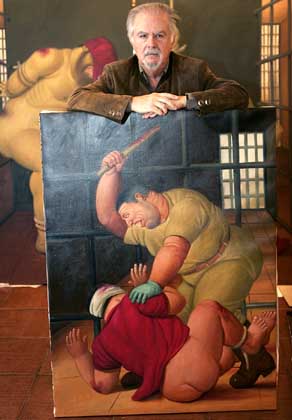
Born in 1932 into the abject poverty of Medellín, Colombia, Fernando Botero is now considered the most famous living artist in the world. Also the wealthiest. And he makes no qualms about it. "Life is such an adventure when you are poor,” he is fond of saying. “To be without money is a great experience" But as this entertaining film abundantly shows, it is far more fun to be rich and famous. Botero's enormous sculptures march down the most exclusive streets of our favorite international capitals. His color-saturated paintings, their oversized subjects, look back at us from the walls of every prestigious museum from the Louvre in Paris to the New York Metropolitan. Their overblown aspects may reflect the artist's own monumental ego, but the endearingly whimsical quality of his creations show us a playful, mischievous personality.
The camera first captures the famously flamboyant artist in his tropical home, surrounded by the joyous music of the Caribbean and a constant phalanx of family, friends and admirers. It follows him to his airy studio and repository, where he is surrounded (but never dwarfed) by huge body parts-- a hand here, a foot there, pale plaster casts of a work in progress, of heroic proportions. We later see the finished pieces, transformed into bronze, and transported with great care and effort, to join others lining the Champs Elysée of Paris, bringing awestruck smiles to an unsuspecting crowd of tourists. For Botero, every exhibition is a major event, and he would not have it any other way.
To study a sculpture or painting of Botero is to follow twenty centuries of western art: From the Latin American influence of Diego Rivera, David Alfaro Siquero and Clemento Orozco to the Spain of Gauguin, Picasso, Goya and Velazquez, then to France and disappointment with the modern French masters, and at last to Italy and the study of the traditional techniques of the Renaissance masters Giotto, Uccelo, Piero della Franchesca, Fra Angelica, Botticelli.
Though influenced in his youth by so many of the great artists of history, Botero, since a first solo exhibition in 1948, continues to surprise and fascinate us with his own very singular vision: He has returned to the colorful, spontaneous folklore of his native Colombia, but his works now have a more rigorous structure, more cerebral, with a spirit of witty, tongue-in-cheek satire. A struggling artist in 1960's New York, his 'Mona Lisa at the age of 12' was discovered by the Museum of Modern Art, and catapulted Botero into the sphere of instant fame. His Latin-American Mona Lisa, a smoking volcano behind her, now beguiles us, much as the cherished icon in the Louvre.
Botero does not 'copy' a well-known masterpiece; he creates a completely original work, "appropriating the theme." Much like the great classical artists before him, he has adapted Van Gogh, as Van Gogh adapted Delacroix. He has adapted Picasso, as Picasso "adapted everybody".
This is not an art critique of Botero's work, as has been done exhaustively by others. (At least 25 books by last count.) This is instead his personal story, in his own words. Funny and fascinating, Botero has a unique way of looking at the myriad life around him, and his musings on the mysterious, monumental forces that formed him enlighten and entertain. A rare look into the private world of an uncommon man, a true artistic genius, and we are a welcome part of his party.
‘ON THE ROAD, NAKED’
THE LIFE & TIMES OF WILLIAM S. BURROUGHS
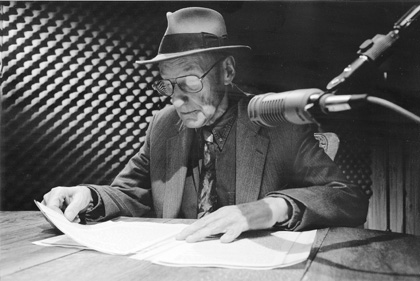
’Naked Lunch’, a...moment when everyone sees what is on the end of every fork ”
A Film by Jean François Vallée Produced by Films du Village/Planet Group Entertainment
“A junkie does not want to get warm; he wants to get ‘cool-cooler-cold, but he wants the cold like he wants his junk. Not outside where it does him no good but inside so it can sit around his spine like a frozen hydraulic jack.‘Naked Lunch’ is a blueprint, a ‘how-to’ book...” W.S.B.
.... As were all the rest of the writings of William S.Burroughs. According to him there were“no more junkies at 103rd and Broadway waiting for their connection. The connection has gone somewhere else.” After the accidental shooting death of his wife and subsequent lurid headlines, he, too, went ‘somewhere else’ to escape his torment, to find his next connection, only to realize he had taken his nightmares with him.
‘On The Road’ takes us on a terrifying, hallucinogenic ride: For us, a mesmerizing horror movie, for Borroughs, his reality. Subliminal nightmarish messages repulse yet fascinate. We cannot take our eyes away from the Hieronymous Bosch interior of this tortured, convoluted mind.
From his beginnings in St. Lois, Missouri (“afraid to be alone and afraid of the dark and afraid to go to sleep because of dreams where a supernatural horror always seemed on the point of taking shape. I was afraid someday the dream would still be there”) to his death in a cabin in Lawrence, Kansas at the age of 83, the dream was, indeed, still there.
The obsessive one-sided homosexual crushes of his youth (after one rejection, he cut off a finger) and his search for a truth, or a lie, larger than himself led him to Harvard in 1932, where he was a brilliant scholar. The distinguished life of an Ivy league don, however, was not to be his future. A former professor now proudly says of him, “There is yet a lot to be discovered and discussed in the work of William S. Burroughs.”
Burroughs himself would probably disagree, and was taken aback by his eventual fame, when books with the dubious titles of ‘The Ticket That Exploded’, ‘The Interzone’ and ‘The Wild Boys’ became international best sellers and were taught in the schools he had abandoned.
In the early 1940’s he found himself on the margin of the ‘American Way of Life’, working as “a private detective, an exterminator, a bartender, in factories and offices. It was at this time... that I came in contact with junk.”
He also came in contact with Jack Kerouac and Allen Ginsberg and begat the nascent stirrings of ‘The Beat Generation’ Then the disastrous death of his wife, and a move to Texas in 1948 where he wrote and tried to stay off heroin. It became but a blip in his long, lonely descent into hell and back again.
“As a geologist looking for oil is guided by certain outcroppings of rock, so certain signs indicate the near presence of junk....Junk is often found adjacent to ambiguously transitional districts,... East 14th near 3rd in New York.... near St.Charles Street in New Orleans.”
From Texas to NewOrleans it was but a short trip to the dives and brothels of Mexico and South America, then to the fleshpots of Tangier and on to the opium dens of Paris, in search of “precarious vegetable serenity.”
For Burroughs it was “necessary to travel”; but “not necessary to live.”
Throughout his ‘travels’, Burroughs is subjected to harassment and arrest, and his writing takes on a paranoia toward the powers of government and big business, “the liars, the traitors, the cowards and collaborators. The anti-spiritual”.
He gives us strong, often gruesome images, weapons of mass destruction, poverty and pollution, the soft underbelly of the ‘real’ world. We listen to prophetic words of warning in his drawling, deadpan voice, and begin to feel his paranoia as a “sense of heightened reality”. We, too, are ‘traveling’ inside his teeming, terrifying mind.
Have we ‘Burroughed’ into the brain of a junkie or a genius? Or both?
To answer this question is to go ‘on the road’ with this quixotic, fascinating, unfathomable man. From the beginning. To visit, through the archive footage that followed him, each ‘Port of Call’: New York, San Francisco, Texas, New Orleans, Mexico, South America, Morocco,Tangiers, Paris, London....and home again to Lawrence, Kansas.
To see these special places from the world of William S. Burroughs, (recalled in his own words from the books he wrote at each destination), and to see the subliminal messages in his well-publicized lectures and interviews, is to see the birth of the Age of Surrealism, the Jazz Age, the Beat Generation, the Age of Aquarius of the Sixties, and its failure in the seventies, the excesses of the eighties and nineties, and the coming back to Ground Zero in the new millennium.
Burroughs tried to find the connection through drugs.....Marijuana, Hashish, LSD, Opium, Morphine, Cocaine, Heroin, and countless experimental chemical substitutes. Gaunt, hollow-cheeked, bedeviled by his own demons, he may have succeeded. Not by glamorizing the junkie mind; by transcending it.
“The ‘heaven’ world is more dangerous than the ‘hell’ world, because it is more enticing.”
David Cronengberg, well-known, controversial Canadian filmmaker (Scanners, Crash, Existenz) created a, naturally, mind-boggling film of the novel ‘Naked Lunch’. One falls into the fevered brain of Burroughs and leaves the theater relieved to escape what Burroughs himself never could.
Performance and multi-media artist Laurie Anderson (Superman, Home of The Brave) recreates ‘Language Is A Virus’ on the New York stage as an homage to Burroughs, and bravely becomes him..(“I appreciate his darkness..he celebrates the escape of meaning.”)
William Seward Burroughs was not exactly ‘celebrating’ escape when he said of love that “Thinking is not enough. Only one thing can resolve coflict. Pure love. The love I feel for my cats.” Except for those cats, he lived alone and worked alone, fighting his enduring obsession with fear, death and decay. This Series about his life teems with life itself, mad, bizarre and otherworldly, but life nonetheless.
“LANGUAGE is a virus from outer space....there’s a cool spot on the surface of Venus, 300 degrees cooler than the surrounding area. I have held that spot against all contestants for 500,000 years; .”
W.S.B. 1914 -1997
For More Information on Availability Please Contact : nagle.patrick@gmail.com
